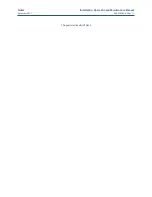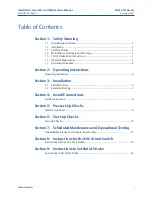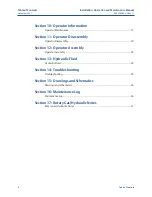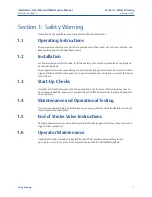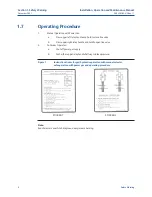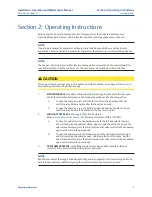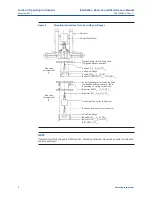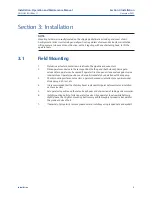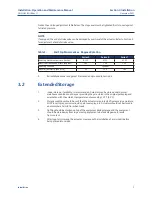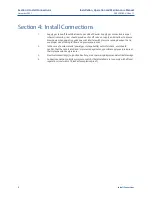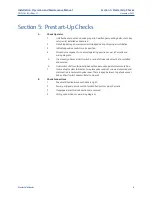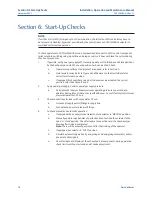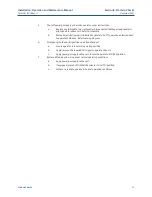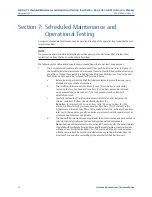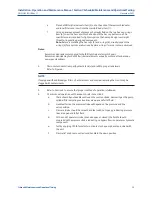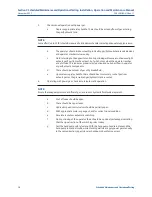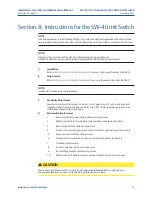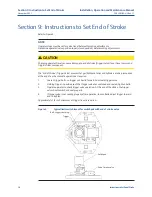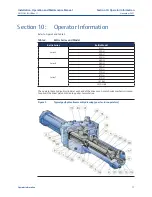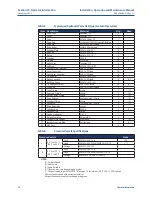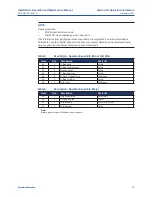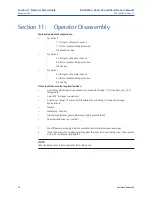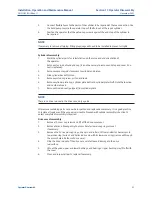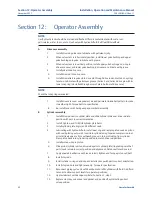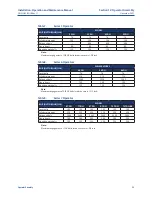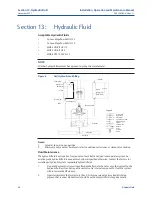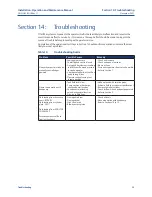
November 2021
Installation, Operation and Maintenance Manual
DOC.IOM.RG.US Rev. 11
10
Section 6: Start-Up Checks
Start-Up Checks
Section 6: Start-Up Checks
NOTE:
If unit has a fail or ESD (Emergency Shut Down) position, the fail-safe or ESD controls may have to
be temporarily disabled, bypassed, overridden by the control room or AUTO/MANUAL selector to
avoid inadvertent valve operation.
To check operation in AUTO or MANUAL mode, temporarily disconnect the ESD control component
(pilot, solenoid, switching relay) signal line, and plug or cap it so it does not bleed the system during
check out procedures.
1.
If possible, with power gas supply off, manually operate unit to full open and close positions
by the handpump on unit. When each position has been reached, Check:
a.
Operator stop settings. If adjustment is required, refer to Section 3.
b.
Fluid levels in tanks. Refer to Figure 6 and the decal on the manifold plate for
correct level for each position.
c.
If equipped, limit switches and end of stroke valves are actuated the correct
position, refer to Sections 8 and 9.
2.
Apply power gas supply. Confirm power gas supply pressure.
a.
Gas/Hydraulic rotary or linear maximum operating pressure as per tank and
operator Nameplates, minimum as specified by user. Consult factory for minimum
pressures lower than 300 psi.
3.
Check connections for leaks with soapy water. Check:
a.
For leaks at supply points/fittings in supply line.
b.
For hydraulic/pneumatic leaks at fittings.
4.
To check manual and automatic operation:
a.
If equipped with an auto/manual selector, place selector in "MANUAL" position.
b.
Manually operate relay handles as per instructions to stroke the actuator to the
"open" or "close" position. Check for leaks at connections and check exhaust gas
blowby after stroke is completed.
Note:
There will be exhaust gas present after the stroking of the operator.
c.
If equipped, put selector in "AUTO" position.
d.
Simulate automatic operation by energizing or de-energizing solenoid(s), and/or
pneumatic pilot signals.
e.
Check for leaks and blowby at the exhaust port of components during operation,
check limit switch contacts and end of stroke adjustment.


